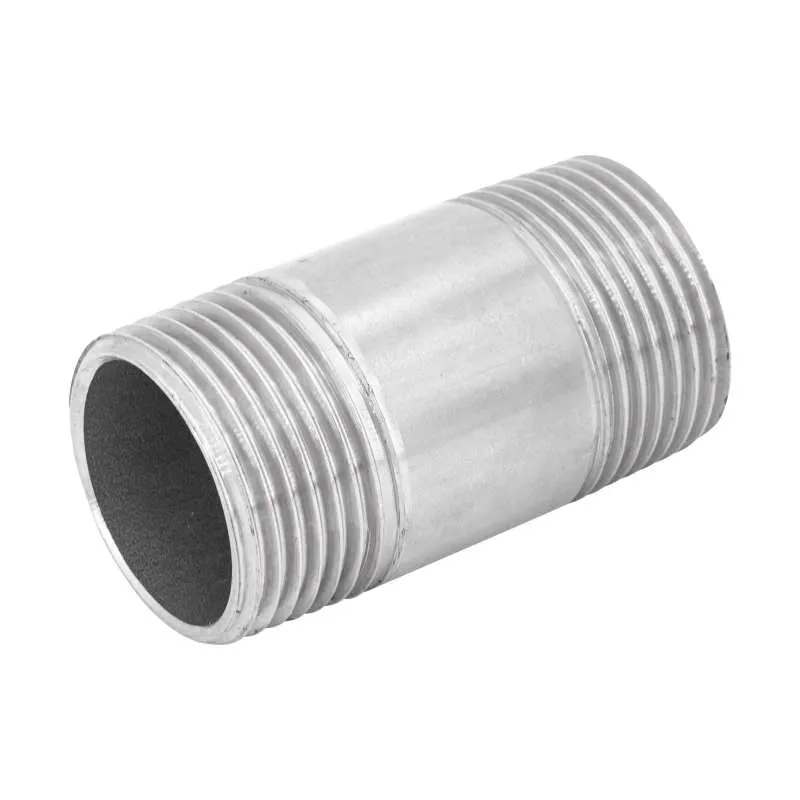-
Cangzhou Yulong Steel Co., Ltd.
-
Phone:
+86 13303177267 -
Email:
admin@ylsteelfittings.com
- English
- Arabic
- Italian
- Spanish
- Portuguese
- German
- kazakh
- Persian
- Greek
- French
- Russian
- Polish
- Thai
- Indonesian
- Vietnamese
- Zulu
- Korean
- Uzbek
- Hindi
- Serbian
- Malay
- Ukrainian
- Gujarati
- Haitian Creole
- hausa
- hawaiian
- Hebrew
- Miao
- Hungarian
- Icelandic
- igbo
- irish
- Japanese
- Javanese
- Kannada
- Khmer
- Rwandese
- Afrikaans
- Albanian
- Amharic
- Armenian
- Azerbaijani
- Basque
- Belarusian
- Bengali
- Bosnian
- Bulgarian
- Catalan
- Cebuano
- China
- China (Taiwan)
- Corsican
- Croatian
- Czech
- Danish
- Esperanto
- Estonian
- Finnish
- Frisian
- Galician
- Georgian
- Kurdish
- Kyrgyz
- Lao
- Latin
- Latvian
- Lithuanian
- Luxembourgish
- Macedonian
- Malgashi
- Malayalam
- Maltese
- Maori
- Marathi
- Mongolian
- Myanmar
- Nepali
- Norwegian
- Norwegian
- Occitan
- Pashto
- Dutch
- Punjabi
- Romanian
- Samoan
- Scottish Gaelic
- Sesotho
- Shona
- Sindhi
- Sinhala
- Slovak
- Slovenian
- Somali
- Sundanese
- Swahili
- Swedish
- Tagalog
- Tajik
- Tamil
- Tatar
- Telugu
- Turkish
- Turkmen
- Urdu
- Uighur
- Welsh
- Bantu
- Yiddish
- Yoruba

Dec . 12, 2024 07:00 Back to list
pipe socket weld
Understanding Pipe Socket Welds
In the world of piping and plumbing, the way components are connected plays a crucial role in the overall integrity and efficiency of a system. One common method of joining pipes is through socket welding. This technique has gained popularity due to its simplicity and effectiveness, particularly in high-pressure applications.
What is Socket Welding?
Socket welding is a type of pipe joint designed for the secure connection of two pipes or a pipe to a fitting. In this process, one pipe is inserted into a pre-fabricated socket, and then the joint is welded together. The design of a socket weld allows for a smooth transition of flow and minimizes turbulence, making it ideal for many industrial applications. Typically, socket welding is used with smaller diameter pipes, especially those used in mechanical systems or under high-pressure environments, such as in oil and gas industries.
Types of Socket Welds
Socket welds are commonly categorized into two types 1. Full Penetration Welds This type of weld penetrates completely through the base material, providing maximum strength and resistance to leaking. Full penetration is ideal for high-stress applications. 2. Partial Penetration Welds These welds do not extend completely through the base material, making them less robust than their full penetration counterparts. They may be used in less critical applications where the joint isn’t subjected to severe forces.
Advantages of Socket Welding
There are several advantages to using socket welding for pipe connections
1. Strength and Pressure Capacity Socket welds are generally stronger than other types of joints, such as threaded or butt welds, making them suitable for high-pressure applications.
2. Reduced Risk of Leaks A properly executed socket weld creates a robust joint that minimizes the risk of leakage, particularly in systems that deal with gases or liquids under pressure.
3. Smooth Flow and Reduced Turbulence The design of socket welds allows for a smooth transition inside the pipeline, which enhances flow characteristics and reduces the risk of turbulence.
pipe socket weld

4. Ease of Installation Socket welding is relatively straightforward and does not require complicated fixtures, making the installation process quicker and more efficient.
5. Versatility Socket welds can be used with various materials, including stainless steel, carbon steel, and other alloys, making them a versatile choice for different applications.
Disadvantages of Socket Welding
While socket welding offers numerous benefits, it is not without its drawbacks. One notable disadvantage is
- Thermal Distortion The heat from the welding process can cause distortion of the pipes, especially if not carefully managed. This can lead to alignment issues in complex piping systems.
Applications of Socket Welding
Socket welding is predominantly used in industries where high-pressure and strong joints are required. Common applications include
- Oil and Gas Used to connect pipes that transport fluids under high pressure, ensuring safety and efficiency. - Power Generation Essential in power plants for boiler feedwater lines and other systems where high pressure and temperature are prevalent. - Chemical Processing Used in systems that require robust connections to handle corrosive substances.
Conclusion
Socket welding is a critical technique in the piping industry that contributes significantly to the reliability and efficiency of various systems. It is characterized by its strength, reduced risk of leaks, and suitability for high-pressure applications. While it has some disadvantages, the advantages often outweigh the drawbacks, making socket welding a favored choice among engineers and technicians. As industries continue to evolve and demand more robust and efficient solutions, the importance of effective joining methods like socket welding cannot be overstated. Understanding this technique is essential for anyone involved in the design, installation, or maintenance of piping systems.
Latest news
-
ANSI 150P SS304 SO FLANGE
NewsFeb.14,2025
-
ASTM A333GR6 STEEL PIPE
NewsJan.20,2025
-
ANSI B16.5 WELDING NECK FLANGE
NewsJan.15,2026
-
ANSI B16.5 SLIP-ON FLANGE
NewsApr.19,2024
-
SABS 1123 FLANGE
NewsJan.15,2025
-
DIN86044 PLATE FLANGE
NewsApr.19,2024
-
DIN2527 BLIND FLANGE
NewsApr.12,2024
-
JIS B2311 Butt-Welding Fittings LR/SR 45°/90° /180°Seamless/Weld
NewsApr.23,2024











